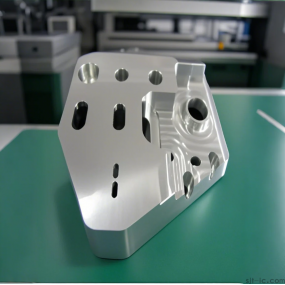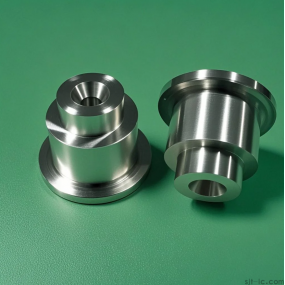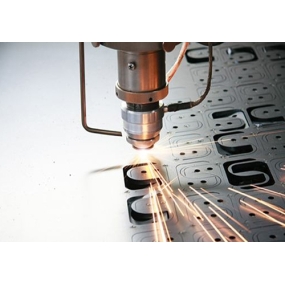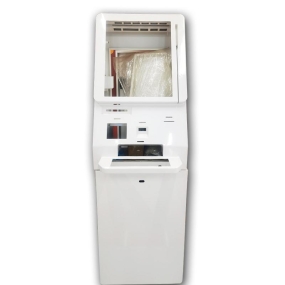Hello everyone! Today, I'm going to talk about high-speed CNC Machining—especially the questions many newbies often ask: What materials can this technology actually machine? And in which fields can it play a significant role? 😃 Don't be fooled by CNC machines looking like clunky metal blocks; they are the "all-rounders" of modern manufacturing, present almost everywhere from mobile phone parts to aircraft engines! So just how wide is their application range? Let's dive in and find out!
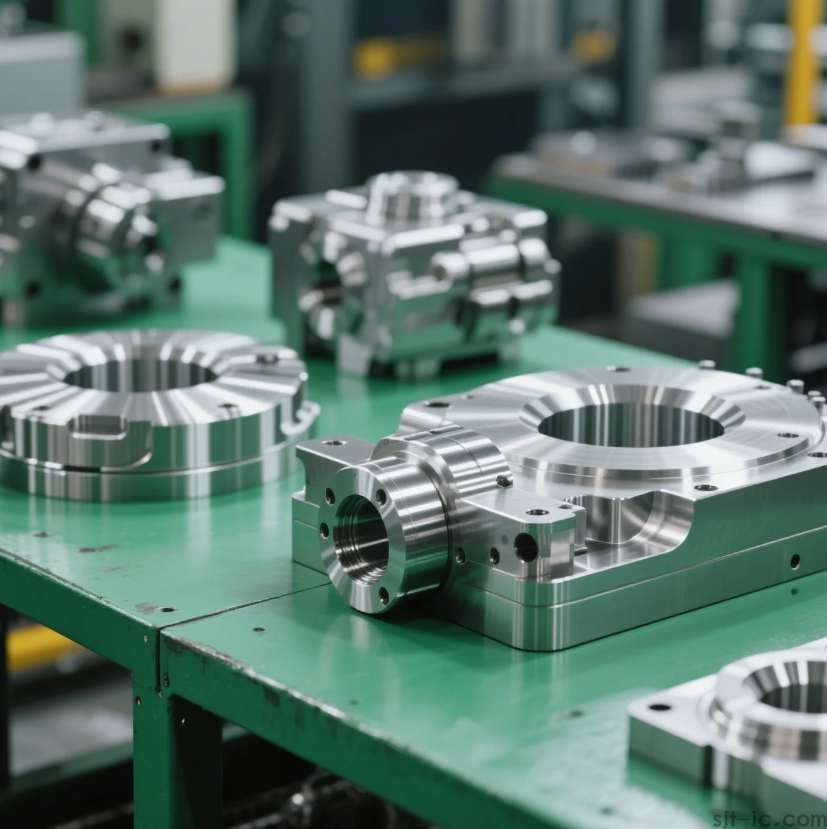
🔍 What Materials Can High-Speed CNC Machining Handle?
High-speed CNC machining isn't capable of "cutting everything," but its applicable range is truly impressive! Simply put, it mainly deals with two major categories: metal materials and non-metal materials. Let's first focus on metals—which are also the main focus of CNC machining:
1. Aluminum Alloys: These are the "star materials" for CNC machining! Models like 6061 and 7075 have low hardness and good thermal conductivity, making them particularly suitable for high-speed cutting. I've seen many manufacturers use them to make mobile phone casings or automotive parts; when the spindle speed reaches over 8000 rpm (revolutions per minute), the surface finish can still be maintained at Ra 0.8 μm (micrometers)~
2. Steel: It can handle everything from low-carbon steel to quenched hard steel. But a word of caution! Machining high-carbon steel (such as mold steel) tends to wear out cutting tools easily. Therefore, carbide tools or even CBN (Cubic Boron Nitride) tools must be used, and the spindle speed also needs to be reduced (to 500-1000 rpm). Otherwise, the tool edges will chip in no time.
3. Copper and Copper Alloys: Pure copper (red copper) is too soft and prone to sticking to the tool, so tools with a large rake angle must be used to force chip breaking. Brass, on the other hand, is much easier to machine—chips break off easily during processing, and it can even be dry-cut (no cutting fluid required)~ However, it's still recommended to add a small amount of emulsion during precision machining to ensure more stable surface quality.
4. Titanium Alloys: These are the "tough nuts to crack" in the aerospace field! They have high strength but poor thermal conductivity, so cutting heat easily concentrates at the tool tip. High-pressure cutting fluid must be used to flush the tool tip directly! Additionally, the spindle speed should be kept low (100-500 rpm) to prevent tool damage due to overheating.
There are also many non-metal materials that can be machined—such as engineering plastics (ABS, nylon), wood, and even composite materials (e.g., carbon fiber). However, plastics have a low melting point, so the temperature must be controlled during high-speed cutting to avoid melting and deformation. Carbon fiber causes significant tool wear, so diamond-coated tools must be used.
🛠️ 5-Axis CNC Machining: The "Ace in the Hole" for High-End Manufacturing
Now that we've covered materials, let's take a look at the application fields of 5-axis CNC machining! It's a representative of high-end machining, capable of controlling the movement of five axes simultaneously, and it achieves exceptional precision when machining complex curved surfaces~
1. Aerospace: For parts like aircraft blades and engine turbine disks—which have twisted shapes and must withstand high pressure—5-axis machines can complete the machining of all contours in a single setup, avoiding repeated positioning errors.
2. Medical Devices: Products such as artificial joints or surgical instruments often have free-form surfaces. 5-axis machining can ensure they meet dimensional accuracy and biocompatibility requirements~ I heard that a certain manufacturer can control the tolerance of titanium alloy joint ball heads within ±0.01 mm!
3. Automotive Molds: Molds for automotive covering parts are large and complex. 5-axis CNC machining enables high-precision milling and shortens the mold production cycle! This is especially true for integrated die-casting molds of new energy vehicles—with deep cavities and abundant details, they simply can't be manufactured without 5-axis technology.
4. Precision Optics: Components like camera lens modules or laser bases require nanoscale surface roughness. 5-axis precision machining can avoid tool marks and improve surface finish~
📊 Materials vs. Fields: How to Achieve More Efficient Matching?
Different materials are suitable for different machining scenarios, and choosing the right match can double efficiency! I've compiled a simple table for your reference:
| Material Type | Recommended Fields | Typical Parameters (Speed/Feed Rate) | Key Tips |
|------------------------------|-----------------------------------|--------------------------------------------|-----------------------------------------------|
| Aluminum Alloys | Electronic Casings, Automotive Parts | 8000-12000 rpm, 0.1-0.3 mm/tooth | Use high speed + sufficient cooling to avoid built-up edges |
| Stainless Steel | Medical Devices, Food Machinery | 1000-2000 rpm, 0.05-0.15 mm/tooth | Use low speed + high feed rate to reduce work hardening |
| Titanium Alloys | Aerospace, Implants | 100-500 rpm, 0.1-0.2 mm/tooth | Use high-pressure cooling + wear-resistant tools to prevent heat accumulation |
| Engineering Plastics | Prototype Production, Insulators | 2000-4000 rpm, 0.1-0.3 mm/tooth | Prioritize air cooling to avoid material deformation caused by cutting fluid absorption |
| Carbon Fiber Composites | Drone Frames, Sports Equipment | 3000-6000 rpm, 0.02-0.1 mm/tooth | Use dedicated diamond tools and low feed rate to prevent delamination |
💡 My View: Don't Blindly Pursue "High Configuration"!
Many newbies think 5-axis machines are amazing and insist on investing in them... But that's not necessary! 3-axis machines are completely sufficient for planar milling or simple contours, and they cost much less~ 5-axis machines are more suitable for scenarios involving complex curved surfaces or high-precision requirements.
In addition, material selection should also be practical. For example, when making functional prototypes, using ABS plastic instead of aluminum alloy can save 30% of costs; it's not too late to switch to metal for small-batch trial production~ After all, CNC machining costs are calculated based on material hardness and processing time!
By the way, I've visited some manufacturers in Dongguan and noticed that their orders have become increasingly diverse in recent years—ranging from 5G base station filters to smartwatch structural components. This shows that the scope of CNC machining is expanding along with emerging industries! So, friends, pay more attention to the new energy and electronics industries—you might get more orders 📈~
✅ Exclusive Data Reference
According to the 2025 industry report, the application growth rate of 5-axis CNC machining in the aerospace field reaches 15% annually, and aluminum alloy machining still accounts for over 40% of the total business volume~ However, the profit from titanium alloy and composite material machining is higher, with a gross profit margin twice that of aluminum alloy machining! So upgrading technology is indeed profitable 💰~
Finally, a reminder: Although high-speed CNC machining is powerful, it must be matched with material characteristics and product requirements! Conduct prototype testing first, then proceed to mass production—taking steady steps can help avoid mistakes~ I hope this useful information will help those of you who are just starting out!


 Spanish
Spanish Arabic
Arabic French
French Portuguese
Portuguese Belarusian
Belarusian Japanese
Japanese Russian
Russian Malay
Malay Icelandic
Icelandic Bulgarian
Bulgarian Azerbaijani
Azerbaijani Estonian
Estonian Irish
Irish Polish
Polish Persian
Persian Boolean
Boolean Danish
Danish German
German Filipino
Filipino Finnish
Finnish Korean
Korean Dutch
Dutch Galician
Galician Catalan
Catalan Czech
Czech Croatian
Croatian Latin
Latin Latvian
Latvian Romanian
Romanian Maltese
Maltese Macedonian
Macedonian Norwegian
Norwegian Swedish
Swedish Serbian
Serbian Slovak
Slovak Slovenian
Slovenian Swahili
Swahili Thai
Thai Turkish
Turkish Welsh
Welsh Urdu
Urdu Ukrainian
Ukrainian Greek
Greek Hungarian
Hungarian Italian
Italian Yiddish
Yiddish Indonesian
Indonesian Vietnamese
Vietnamese Haitian Creole
Haitian Creole Spanish Basque
Spanish Basque

